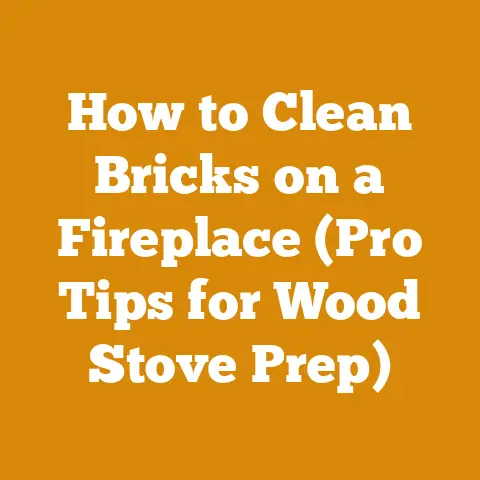How to Build a Rocket Mass Heater from Old Wood Stove (Batch Box DIY)
Here is your article:
The Best-Kept Secret to Heating Your Home More Efficiently: A Rocket Mass Heater from an Old Wood Stove
I’m going to let you in on a little secret – a way to heat your home far more efficiently, sustainably, and even creatively than you might have thought possible. It’s something I stumbled upon years ago when I was looking for a way to drastically reduce my heating bills and lessen my environmental impact. The answer? Building a rocket mass heater from an old wood stove.
Now, I know what you might be thinking: “Rocket mass heater? That sounds complicated!” And yes, there’s a bit of a learning curve. But trust me, the benefits are well worth the effort. We’re talking about a heating system that burns wood incredibly cleanly, extracts maximum heat, and stores it for long-lasting warmth. Plus, repurposing an old wood stove? That’s just good, old-fashioned ingenuity.
In this guide, I’ll walk you through the entire process of building your own batch box rocket mass heater using a reclaimed wood stove. I’ll share my experiences, the mistakes I’ve made (and learned from!), and the tips and tricks I’ve picked up along the way. Whether you’re a seasoned DIYer or just starting out, this guide will equip you with the knowledge and confidence to tackle this project.
Key Takeaways You’ll Learn
What is a Rocket Mass Heater and Why Should I Build One?
Before we dive into the construction, it’s crucial to understand what a rocket mass heater is and why it’s such a game-changer.
A rocket mass heater (RMH) is a type of wood-burning heating system designed for maximum efficiency and minimal emissions. Unlike traditional wood stoves, which often lose a significant amount of heat up the chimney, RMHs are engineered to extract as much heat as possible from the wood and store it in a thermal mass, such as a cob bench or a brick wall.
Here’s how it works:
- The Rocket Effect: The fire burns in a combustion chamber designed to create a strong updraft, or “rocket effect.” This ensures complete combustion, reducing smoke and creosote buildup.
- Heat Exchanger: Hot gases are channeled through a heat exchanger, typically a horizontal or vertical run of pipe. This allows the heat to be absorbed by the surrounding thermal mass.
- Thermal Mass: The thermal mass, which can be made of cob, brick, stone, or other dense materials, slowly absorbs and stores the heat. This heat is then radiated back into the room over an extended period, providing consistent and comfortable warmth.
- Clean Exhaust: Because of the complete combustion and efficient heat extraction, the exhaust gases are relatively cool and clean, reducing air pollution.
Why Choose a Rocket Mass Heater?
- Efficiency: RMHs can achieve efficiencies of 80% or higher, compared to 40-60% for traditional wood stoves. This means you’ll use less wood to heat your home.
- Clean Burning: The complete combustion process significantly reduces smoke and emissions, making RMHs a more environmentally friendly option.
- Thermal Mass: The stored heat provides consistent warmth for hours, even after the fire has gone out.
- Cost-Effective: Building an RMH from salvaged materials can be a very affordable way to heat your home.
- Sustainability: Using wood as a renewable energy source can reduce your reliance on fossil fuels.
My Personal Experience:
I remember the first winter after I built my RMH. Before, I was constantly feeding my old wood stove, and the house would swing between freezing and sweltering. But with the RMH, the temperature stayed consistent, and I was using about half the wood I used to. It was a revelation!
The Batch Box Design: A Key Improvement
The “batch box” design is a specific type of rocket mass heater that offers several advantages over traditional designs. In a batch box, a larger batch of wood is burned at once, rather than continuously feeding the fire. This allows for a more controlled and efficient burn, further reducing emissions and increasing heat output.
Key Features of a Batch Box:
- Larger Firebox: Holds a larger quantity of wood.
- Controlled Burn: The fire burns intensely for a shorter period, followed by a longer period of heat release.
- Improved Combustion: The design promotes complete combustion, resulting in cleaner emissions.
Data and Statistics: The Numbers Don’t Lie
Let’s look at some data to back up the claims about RMH efficiency and environmental impact.
- Efficiency: Studies have shown that RMHs can achieve efficiencies of 80% or higher, compared to 40-60% for traditional wood stoves. This means you’ll use significantly less wood to heat your home.
- Emissions: RMHs produce significantly lower emissions than traditional wood stoves. A study by Aprovecho Research Center found that RMHs can reduce particulate matter emissions by up to 90%.
- Fuel Consumption: According to the Biomass Energy Resource Center (BERC), using wood as a heating fuel can reduce carbon emissions by up to 80% compared to fossil fuels.
Expert Insight:
“Rocket mass heaters represent a significant advancement in wood-burning technology,” says Erica Wisner, co-author of “Rocket Mass Heaters: Superefficient Wood Heat You Can Build.” “They offer a cleaner, more efficient, and more sustainable way to heat our homes.”
Planning Your Build: From Concept to Reality
Before you start gathering materials and tools, it’s essential to plan your build carefully. This will save you time, money, and frustration in the long run.
Assessing Your Wood Stove: Is it a Good Candidate?
Not all wood stoves are created equal. Some are better suited for repurposing into a rocket mass heater than others. Here’s what to look for:
- Material: Cast iron stoves are generally the best choice due to their durability and heat retention properties. Steel stoves can also work, but they may not last as long.
- Size: The size of your wood stove will determine the size of your rocket mass heater. A larger stove will require a larger thermal mass.
- Condition: Inspect the stove for cracks, rust, or other damage. If the stove is in poor condition, it may not be worth repurposing.
- Door: A well-sealing door is essential for controlling the airflow in the firebox.
My Experience:
I initially tried to use a very old, rusted-out stove I found in a barn. It looked like it had been through a war! Needless to say, it didn’t work out. The metal was too thin and corroded, and it just couldn’t handle the intense heat of the rocket fire. Lesson learned: start with a solid, reasonably well-maintained stove.
Designing Your Rocket Mass Heater: Size and Layout
The size of your rocket mass heater will depend on several factors, including:
- The size of your wood stove.
- The size of the room you want to heat.
- The climate you live in.
- The amount of thermal mass you want to use.
As a general rule, a larger room and colder climate will require a larger rocket mass heater with more thermal mass.
Here are some general guidelines:
- Firebox Volume: As a rule of thumb, the firebox volume should be roughly 1/10th of the volume of the room you are heating. For example, a 2000 cubic foot room would require a 200 cubic foot firebox.
- Heat Riser: The heat riser is the vertical section of pipe that creates the “rocket effect.” It should be at least 6 inches in diameter and 3 feet tall.
- Heat Exchanger: The heat exchanger is the horizontal or vertical run of pipe that transfers heat to the thermal mass. The length of the heat exchanger will depend on the size of your room and the amount of thermal mass you want to use.
- Thermal Mass: The thermal mass should be at least 4 inches thick and cover a significant portion of the room’s surface area.
Layout Considerations:
- Old Wood Stove: As discussed above, choose a stove that is in good condition and made of durable materials.
- Firebricks: These are essential for lining the firebox and heat riser, as they can withstand high temperatures.
- Insulation: Perlite, vermiculite, or ceramic fiber insulation are used to insulate the heat riser and heat exchanger, preventing heat loss.
- Piping: You’ll need stovepipe for the heat riser and heat exchanger. 6-inch diameter pipe is a common choice.
- Thermal Mass Materials: Cob (clay, sand, and straw), bricks, stone, or other dense materials can be used for the thermal mass.
- Clay Mortar: Used to bind the bricks or stones together.
- Sand: Used as a filler material in the thermal mass.
- Water: For mixing the cob and clay mortar.
- Gravel: For the base of the RMH.
- Metal Barrel (Optional): Can be used as a form for the thermal mass.
- Chimney Pipe: For venting the exhaust gases outside.
Tools You’ll Need:
- Welder: For modifying the wood stove and connecting the piping.
- Angle Grinder: For cutting metal and grinding welds.
- Brick Hammer and Chisel: For cutting bricks.
- Mixing Tubs: For mixing cob and clay mortar.
- Shovels and Buckets: For moving materials.
- Level: For ensuring the RMH is level.
- Measuring Tape: For accurate measurements.
- Safety Glasses and Gloves: Essential for protecting your eyes and hands.
- Respirator: For protecting your lungs from dust and fumes.
Budgeting:
The cost of building a rocket mass heater can vary depending on the materials you use and whether you can salvage some of them. However, it’s generally much cheaper than buying a new wood stove or other heating system.
Here’s a rough estimate:
- Wood Stove: Free to $200 (if you need to buy one)
- Firebricks: $50 – $100
- Insulation: $30 – $50
- Piping: $50 – $100
- Thermal Mass Materials: $50 – $200 (depending on the material you choose)
- Clay Mortar: $20 – $40
- Tools: You may already have many of the tools you need, but if not, expect to spend $100 – $200 on essential tools.
Total Estimated Cost: $350 – $890
Obtaining Permits and Approvals: Don’t Skip This Step!
Before you start building, it’s essential to check with your local building department to see if you need any permits or approvals. Building codes vary from place to place, so it’s crucial to ensure you comply with all regulations.
Potential Issues:
- Zoning Regulations: Some areas may have restrictions on wood-burning appliances.
- Building Codes: You may need to meet specific requirements for fire safety and ventilation.
- Insurance: Your insurance company may require you to have your RMH inspected by a qualified professional.
My Advice:
Don’t try to fly under the radar! It’s always better to be upfront with your local authorities. They can provide valuable guidance and ensure your RMH is safe and compliant.
Building Your Batch Box Rocket Mass Heater: A Step-by-Step Guide
Now for the exciting part: building your rocket mass heater! This is where all your planning and preparation will pay off.
Step 1: Preparing the Foundation
The foundation is the base of your RMH and needs to be strong and level.
- Clear the Area: Remove any vegetation or debris from the area where you’ll be building the RMH.
- Dig a Shallow Pit: Dig a pit about 6 inches deep and slightly larger than the base of your RMH.
- Add Gravel: Fill the pit with gravel to provide drainage and stability.
- Level the Gravel: Use a level to ensure the gravel is perfectly level.
- Pour a Concrete Slab (Optional): For added stability, you can pour a concrete slab on top of the gravel.
Step 2: Modifying the Wood Stove
This step involves modifying your old wood stove to create the firebox and combustion chamber of the RMH.
- Remove Unnecessary Parts: Remove any parts of the stove that you won’t need, such as the legs, grates, or dampers.
- Create the Firebox Opening: Cut an opening in the front of the stove to create the firebox opening. The size of the opening will depend on the size of your wood and the desired burn time.
- Weld on a Flange: Weld a flange around the firebox opening to attach the heat riser.
- Add an Afterburner (Optional): An afterburner is a small chamber above the firebox that helps to burn off any remaining gases. This can further reduce emissions.
Step 3: Building the Heat Riser
The heat riser is the vertical section of pipe that creates the “rocket effect.”
- Attach the Heat Riser to the Flange: Attach the heat riser to the flange on the firebox opening. Use a high-temperature sealant to ensure a tight seal.
- Insulate the Heat Riser: Insulate the heat riser with perlite, vermiculite, or ceramic fiber insulation. This will prevent heat loss and improve the efficiency of the RMH.
- Enclose the Heat Riser (Optional): You can enclose the heat riser in a metal barrel or brick enclosure to further insulate it and protect it from the elements.
Step 4: Constructing the Heat Exchanger
The heat exchanger is the horizontal or vertical run of pipe that transfers heat to the thermal mass.
- Attach the Heat Exchanger to the Heat Riser: Attach the heat exchanger to the top of the heat riser.
- Route the Heat Exchanger: Route the heat exchanger through the thermal mass. The length of the heat exchanger will depend on the size of your room and the amount of thermal mass you want to use.
- Insulate the Heat Exchanger: Insulate the heat exchanger with perlite, vermiculite, or ceramic fiber insulation.
Step 5: Creating the Thermal Mass
The thermal mass is the heart of the RMH, storing and radiating heat into the room.
- Choose Your Material: Select the material you want to use for the thermal mass, such as cob, bricks, or stone.
- Build the Thermal Mass: Build the thermal mass around the heat exchanger. Ensure the thermal mass is at least 4 inches thick and covers a significant portion of the room’s surface area.
- Pack with Sand: Pack the thermal mass with sand to fill any gaps and improve heat transfer.
- Apply a Finish Coat (Optional): Apply a finish coat of clay plaster or other material to protect the thermal mass and improve its appearance.
Step 6: Installing the Chimney
The chimney vents the exhaust gases outside.
- Attach the Chimney Pipe: Attach the chimney pipe to the end of the heat exchanger.
- Route the Chimney Pipe: Route the chimney pipe through the wall or roof.
- Ensure Proper Clearance: Ensure the chimney pipe has proper clearance from combustible materials.
- Install a Chimney Cap: Install a chimney cap to prevent rain and snow from entering the chimney.
Step 7: Testing and Fine-Tuning
Once the RMH is complete, it’s time to test it and fine-tune its performance.
- Start a Small Fire: Start a small fire in the firebox and gradually increase the size of the fire.
- Monitor the Temperature: Monitor the temperature of the heat riser, heat exchanger, and thermal mass.
- Adjust the Airflow: Adjust the airflow to optimize combustion and heat transfer.
- Check for Leaks: Check for any leaks in the system.
- Observe the Exhaust: Observe the exhaust coming from the chimney. It should be relatively clean and free of smoke.
Troubleshooting Tips:
- Poor Combustion: If the fire is smoky or doesn’t burn efficiently, try adjusting the airflow or using drier wood.
- Insufficient Heat: If the RMH doesn’t produce enough heat, try increasing the size of the firebox or adding more thermal mass.
- Overheating: If the RMH overheats, try reducing the size of the fire or adding more insulation.
Safety First: Essential Precautions
Building and operating a rocket mass heater involves inherent risks. It’s crucial to take the necessary safety precautions to protect yourself and your property.
- Wear Safety Glasses and Gloves: Always wear safety glasses and gloves when working with tools and materials.
- Use a Respirator: Use a respirator when working with dust or fumes.
- Ventilate the Area: Ensure proper ventilation when welding or working with chemicals.
- Keep Flammable Materials Away: Keep flammable materials away from the RMH.
- Install a Smoke Detector: Install a smoke detector in the room where the RMH is located.
- Have a Fire Extinguisher Nearby: Keep a fire extinguisher nearby in case of emergency.
- Never Leave the Fire Unattended: Never leave the fire unattended.
- Regularly Inspect the RMH: Regularly inspect the RMH for any signs of damage or deterioration.
- Consult with a Professional: If you’re unsure about any aspect of the build or operation, consult with a qualified professional.
Maintaining Your Rocket Mass Heater: Long-Term Care
Proper maintenance is essential for ensuring the long-term performance and safety of your rocket mass heater.
- Clean the Chimney Regularly: Clean the chimney regularly to prevent creosote buildup.
- Inspect the Firebox: Inspect the firebox for any cracks or damage.
- Repair Any Leaks: Repair any leaks in the system.
- Maintain the Thermal Mass: Maintain the thermal mass by repairing any cracks or damage and reapplying the finish coat as needed.
- Use Dry Wood: Use dry, seasoned wood to ensure efficient combustion and reduce creosote buildup.
- Store Wood Properly: Store wood in a dry, well-ventilated area.
Beyond the Basics: Advanced Techniques and Customizations
Once you’ve mastered the basic RMH build, you can explore advanced techniques and customizations to further improve its performance and efficiency.
- Water Heating: Integrate a water heating system into the RMH to heat your domestic water.
- Cooking Surface: Add a cooking surface to the top of the RMH for cooking food.
- Baking Oven: Build a baking oven into the thermal mass for baking bread or other foods.
- Custom Designs: Experiment with different designs and materials to create a unique and personalized RMH.
Conclusion: Embrace the Rocket Revolution
Building a rocket mass heater from an old wood stove is a challenging but rewarding project. It’s a way to heat your home more efficiently, sustainably, and creatively. It also reduces your environmental impact. By following the steps outlined in this guide and taking the necessary safety precautions, you can build a rocket mass heater that will provide you with years of warmth and comfort.
So, are you ready to embrace the rocket revolution? I encourage you to give it a try. You might just be surprised at what you can accomplish.
Next Steps:
- Assess your wood stove.
- Design your rocket mass heater.
- Gather your materials and tools.
- Obtain permits and approvals.
- Start building!
Good luck, and happy building!






